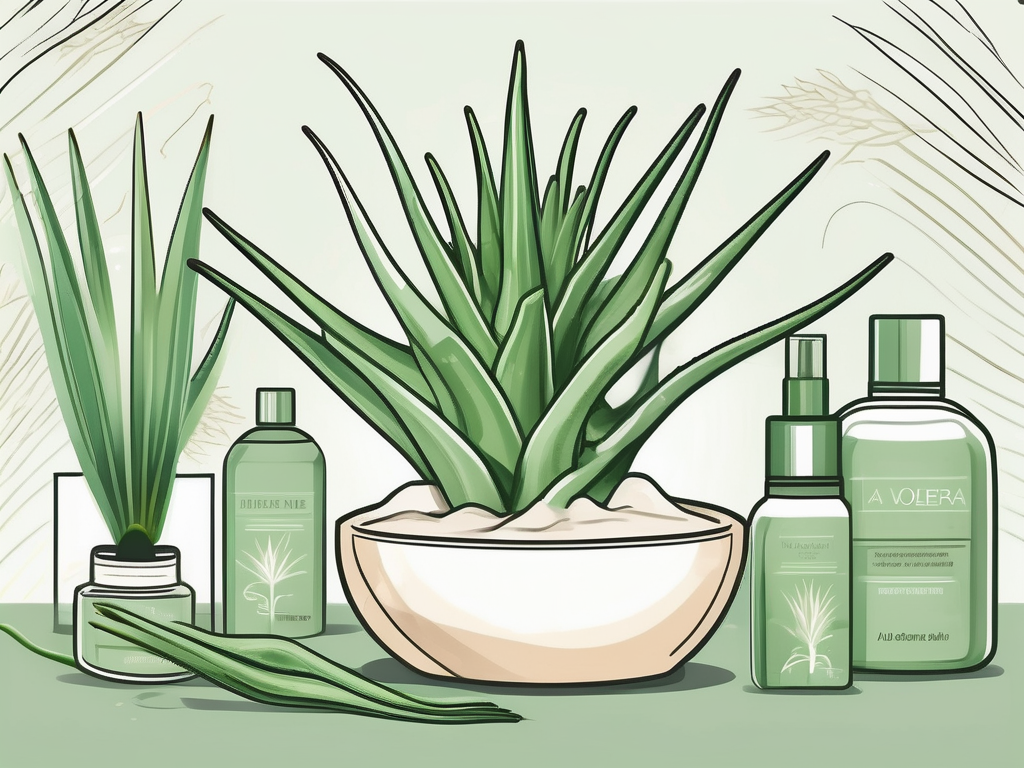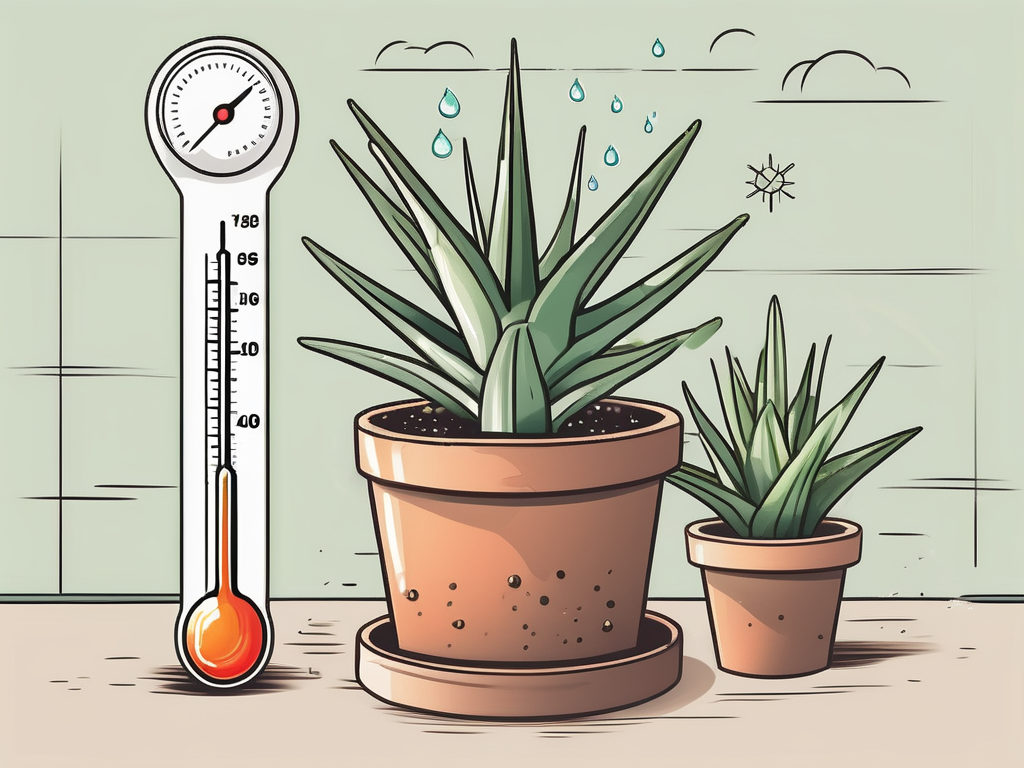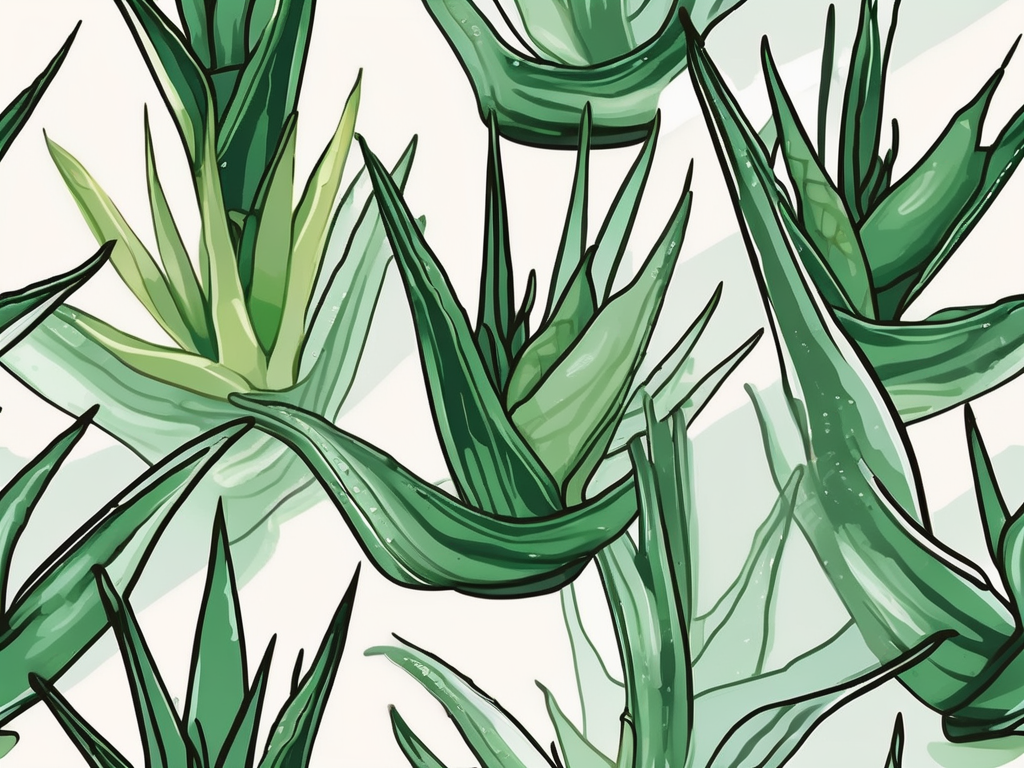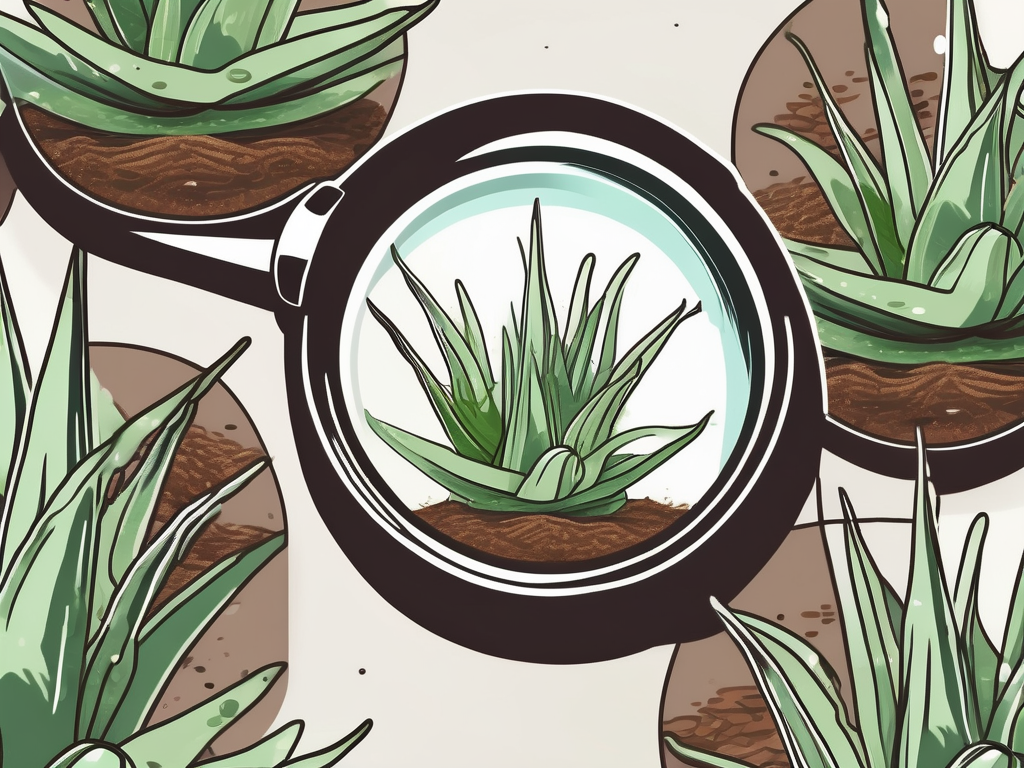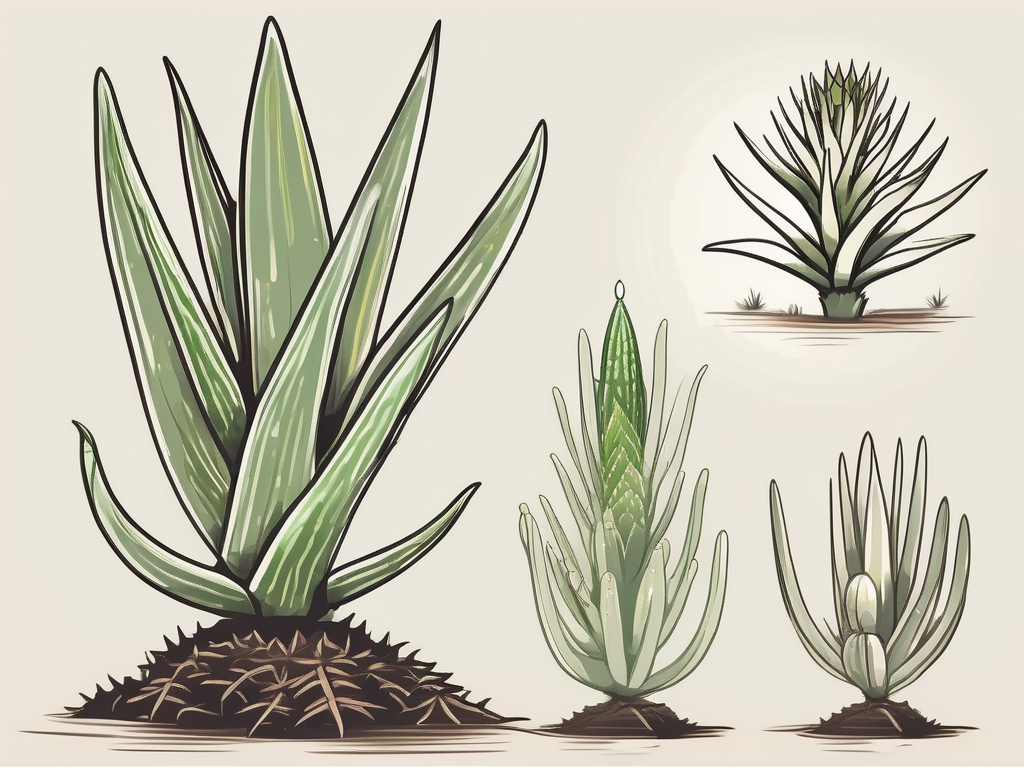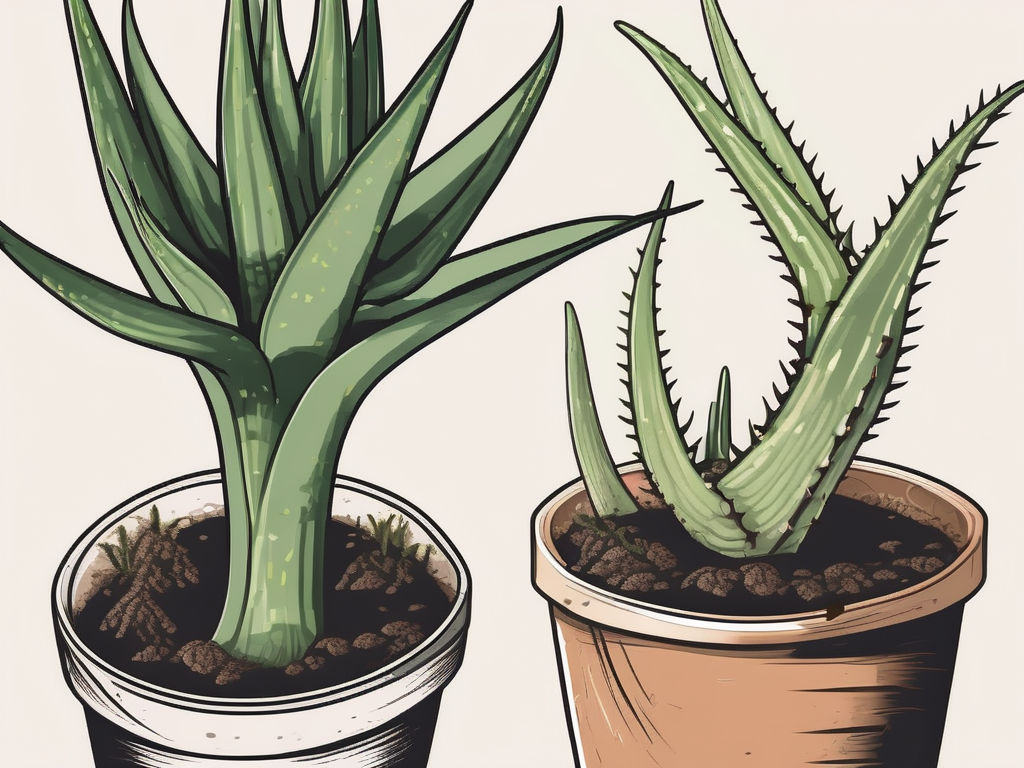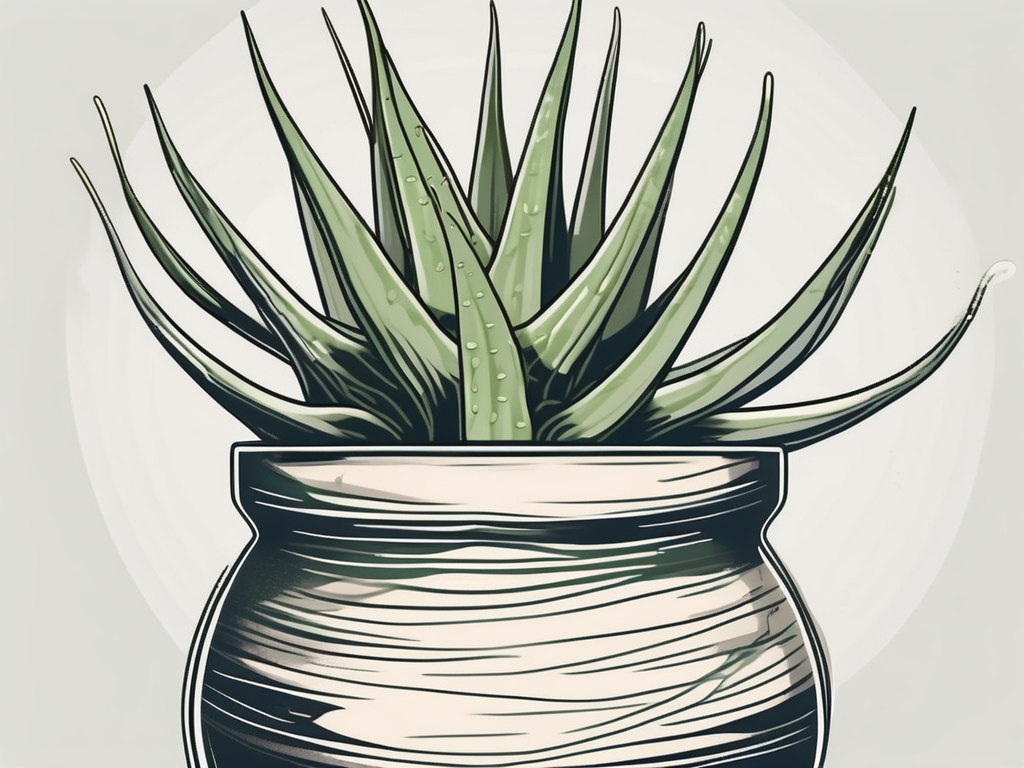
Aloe vera is a household favorite for many plant lovers. Not only is it a striking addition to any home with its fleshy, spiky leaves, but it also boasts a multitude of health benefits. However, even the most resilient plants can run into trouble, and one common issue is becoming "root bound." But what exactly does that mean, and how does it affect your aloe vera?
In this article, we'll explore the concept of a root-bound aloe vera, how to identify the signs, and what to do if your plant finds itself in this predicament. We'll also share tips on repotting and ongoing care to ensure your aloe vera thrives in its new home. So, let's get started!
Understanding Root Bound: What Does It Mean?
When a plant is described as "root bound," it essentially means that its roots have outgrown their current container. Imagine trying to fit into a pair of shoes that are two sizes too small. Uncomfortable, right? That's what your aloe vera experiences when it becomes root bound. The roots start circling the pot, searching for more space, but eventually, they run out of room, leading to a tangled mess.
This situation isn't ideal for your plant. The lack of space can stunt growth, limit nutrient uptake, and even cause the plant to become unstable. While some plants tolerate being root bound better than others, aloe vera prefers a bit more room to stretch its roots. So, keeping an eye out for signs of a root-bound plant is key to maintaining a healthy aloe.
Interestingly enough, some plant people intentionally keep certain plants slightly root bound to encourage flowering. However, with aloe vera, the goal is typically to maintain a balance between root space and container size. So, how do you know if your aloe vera is root bound? Let's find out.
Spotting the Signs: Is Your Aloe Vera Root Bound?
Recognizing the signs of a root-bound aloe vera can save you a lot of trouble down the road. Here are some telltale indicators that your plant might be in need of a new pot:
- Roots Poking Out: One of the most obvious signs is roots growing out of the drainage holes at the bottom of the pot. This indicates that the roots have filled up all available space and are looking for more.
- Slow Growth: If your aloe vera seems to have hit a growth plateau, it might be because it's struggling in a cramped pot. Lack of space can limit its ability to expand and develop.
- Wilting or Yellowing Leaves: When roots are constricted, they can't absorb nutrients properly, leading to nutrient deficiencies. This can manifest as wilting or yellowing leaves.
- Soil Dries Out Quickly: A root-bound plant will deplete water from the soil faster than usual, causing the soil to dry out more quickly. Frequent watering might be needed, but it's a sign that the plant needs more space.
- Pot Feels Heavy: If the pot feels unusually heavy even after watering, it might be due to the dense root mass taking up most of the pot's volume.
If you're observing one or more of these signs, it's time to consider repotting your aloe vera. But before you grab a new pot, there are a few things to consider.
Choosing the Right Pot: Size and Material Matter
When it comes to repotting your aloe vera, selecting the right pot can make all the difference. The size and material of the pot are both crucial factors to consider. Here's a quick guide to help you choose wisely:
Size Matters
A common mistake is selecting a pot that's either too large or too small. Ideally, you want a pot that's about 1-2 inches larger in diameter than the current one. This gives the roots ample room to grow without being overwhelmed by too much space. Going too big can lead to water retention issues, as the plant won't be able to absorb all the moisture, which may cause root rot.
Material Considerations
The material of your pot can affect the moisture levels and temperature of the soil, impacting your aloe's well-being. Here are some options to consider:
- Terracotta: A popular choice due to its natural, rustic look and excellent drainage properties. It's porous, allowing excess moisture to evaporate, which helps prevent waterlogging.
- Ceramic: These pots come in various sizes and designs, adding a decorative touch to your home. However, they can retain more moisture than terracotta, so ensure they have drainage holes.
- Plastic: Lightweight and affordable, plastic pots are easy to move around. They retain moisture well, which can be both a benefit and a drawback, depending on your watering habits.
Once you've selected the perfect pot, it's time to gather the necessary supplies and get ready to give your aloe vera a fresh start.
Preparing for Repotting: Gathering Supplies
Before you dive into the repotting process, it's important to have all the necessary supplies at hand. Here's what you'll need:
- New Pot: As discussed, choose one that's slightly larger with good drainage.
- Potting Mix: Aloe vera thrives in a well-draining mix. A cactus or succulent mix works well, or you can create your own by mixing regular potting soil with sand or perlite.
- Gloves: Aloe vera leaves have tiny spines, so wearing gloves can protect your hands during the process.
- Scissors or Pruners: These are handy for trimming any damaged roots or leaves.
- Watering Can: To moisten the soil after repotting.
With your supplies ready, you're all set to start the repotting process. Remember, patience is key. Take your time, and your aloe vera will thank you for it!
Step-by-Step Guide to Repotting Your Aloe Vera
Now that you're prepared, it's time to get your hands dirty—literally! Follow these simple steps to repot your aloe vera and give it a new lease on life:
- Remove the Plant: Gently tip the pot on its side and carefully slide out the aloe vera. If it's stuck, lightly tap the sides of the pot to loosen the soil.
- Inspect the Roots: Once out of the pot, examine the roots for any signs of damage or rot. Healthy roots should be white or light tan. Trim off any dark, mushy, or dead roots using your scissors or pruners.
- Prepare the New Pot: Add a layer of potting mix at the bottom of the new pot. This ensures that the roots have a comfortable base to settle into.
- Position the Plant: Place your aloe vera in the center of the new pot. Make sure it's at the same depth as it was in the previous pot.
- Fill with Potting Mix: Add more potting mix around the plant, gently pressing down to eliminate air pockets. Be careful not to cover the base of the leaves, as this can lead to rot.
- Water Thoroughly: Give your aloe vera a good drink, allowing water to flow through the drainage holes. This helps settle the soil around the roots.
And there you have it! Your aloe vera is now comfortably settled into its new pot. But the journey doesn't end here. Let's talk about how to care for your newly repotted plant.
Caring for Your Aloe Vera Post-Repotting
After repotting, your aloe vera might need a little extra TLC to adjust to its new home. Here are some care tips to help it thrive:
Watering
One of the most common mistakes with aloe vera is overwatering. Remember, less is more! Allow the top inch of soil to dry out completely between waterings. During the growing season (spring and summer), water every two to three weeks. In the dormant season (fall and winter), reduce watering to once a month or as needed.
Lighting
Aloe vera loves bright, indirect light. Place it near a sunny window, but avoid direct sunlight as it can scorch the leaves. If your plant starts to stretch or lean towards the light, it might be craving more sun.
Temperature and Humidity
These plants thrive in temperatures between 60°F and 75°F (15°C to 24°C). Avoid placing them near cold drafts or heating vents, as sudden temperature changes can stress the plant. Aloe vera is not too fussy about humidity, making it perfect for indoor environments.
By following these guidelines, your aloe vera should adapt well to its new pot and continue to flourish.
Common Mistakes and How to Avoid Them
Even the most experienced plant parents can make mistakes. Here are some common pitfalls when caring for aloe vera and how to avoid them:
- Overwatering: As mentioned earlier, aloe vera prefers to dry out between waterings. Too much water can lead to root rot, which is a major cause of plant death.
- Using the Wrong Soil: A well-draining soil mix is crucial for aloe vera. If the soil retains too much moisture, it can cause root issues.
- Ignoring Light Needs: Ensure your aloe vera receives enough light. If it's stretching or pale, it might be lacking adequate sunlight.
- Neglecting Temperature Changes: Keep your plant away from drafts and sudden temperature changes, especially during colder months.
By being mindful of these common mistakes, you'll be better equipped to care for your aloe vera and ensure it remains healthy and vibrant.
Designing with Aloe Vera: Adding Style to Your Space
Beyond its healing properties, aloe vera can be a stylish addition to any room. With its unique shape and texture, it can complement a variety of interior design styles. Here are some ideas to incorporate aloe vera into your home decor:
Minimalist Aesthetics
Aloe vera's clean lines and simple silhouette make it a perfect fit for minimalist spaces. Pair it with a neutral-colored pot to maintain a sleek, unobtrusive look. Place it on a windowsill, desk, or shelf to add a touch of greenery without overwhelming the space.
Bohemian Vibes
For those who love a more eclectic style, consider using colorful or patterned pots to house your aloe vera. Group it with other succulents or trailing plants to create a lush, vibrant arrangement. Adding natural elements like macrame hangers or wooden stands can enhance the boho feel.
Modern Touches
If you prefer a modern look, opt for geometric pots or metallic accents. Aloe vera's architectural form can provide a striking contrast to sleek, contemporary furniture. Use it as a centerpiece on a coffee table or side table for a bold statement.
No matter your style, aloe vera can be a versatile and eye-catching addition to your home.
Understanding Aloe Vera's Health Benefits
While we've focused on the care and decor aspects of aloe vera, let's not forget its health benefits! Aloe vera has been used for centuries for its soothing and healing properties. Here's a quick rundown of what this amazing plant can offer:
- Skin Soothing: Aloe vera gel is known for its ability to soothe burns, cuts, and skin irritations. It's a natural moisturizer and can help reduce inflammation.
- Digestive Aid: Aloe vera juice, when consumed in moderation, is believed to support digestion and relieve constipation. However, it's important to consult a healthcare professional before adding it to your diet.
- Air Purification: Like many houseplants, aloe vera can help purify the air by removing toxins and improving indoor air quality.
Whether you use it for its health benefits or simply enjoy its aesthetic appeal, aloe vera is a plant that offers more than meets the eye.
Final Thoughts
Caring for an aloe vera plant means paying attention to its root space, knowing when to repot, and providing the right conditions for growth. We've covered everything from spotting signs of a root-bound plant to styling tips for your home. With a bit of care and knowledge, your aloe vera can thrive and continue to bring a touch of nature into your space.
If you're in the market for new houseplants or need advice on plant care, Cafe Planta is here to help. We offer a variety of houseplants and accessories, plus we're always ready to answer your plant care questions. Feel free to email us or reach out on Instagram. Let's connect and grow our love for plants together!













